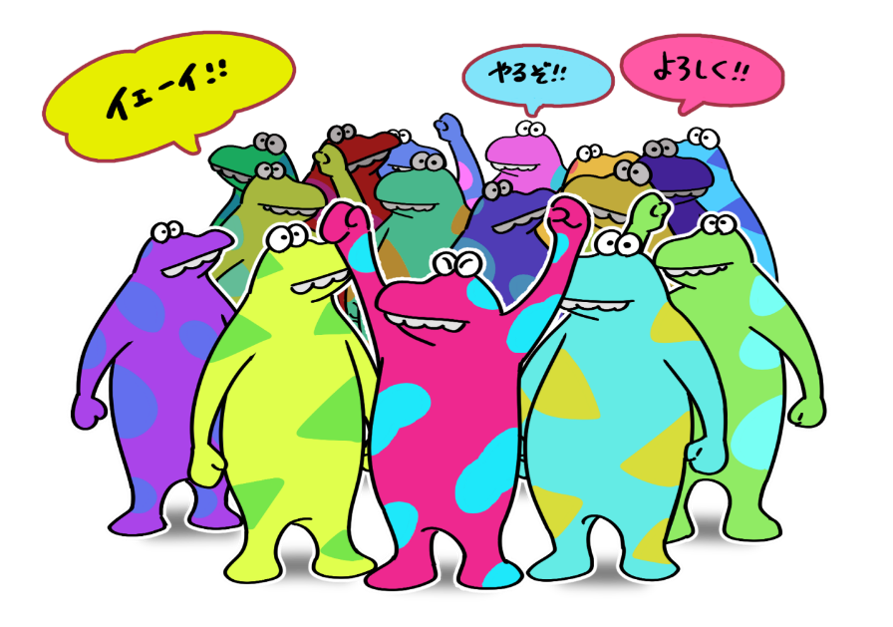
Survival Quiz CITY is an off-the-wall quiz game that was released on Steam (*1) in March 2022. In it, thirty CITY residents (individually known as GYAAR-kun) compete by answering a quiz, and are then divided into winning and losing teams based on their results. Losers must scramble through various obstacle courses to make it to the goal, while the winning team pellets them with bullets and explosions in an attempt to stop them in their tracks. The game’s asymmetrical design and its ‘80s and ‘90s influenced artwork sparked fervent discussion among its players.
In many senses, this title approached development from a unique perspective. For example, the development team was centered on a small team of around ten members, and four user tests, one every three months, were held to receive feedback from users which was then implemented in the title. Finally, the game was published by Phoenixx, an external indie game publisher, not Bandai Namco Entertainment. So how did the development team develop a game like this, and what did they learn along the way?
Participants were interviewed in an online discussion over Zoom. (Held April 2022.)
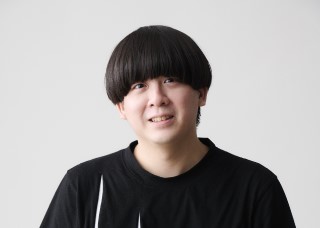
- Yusuke Shigeta
- Producer
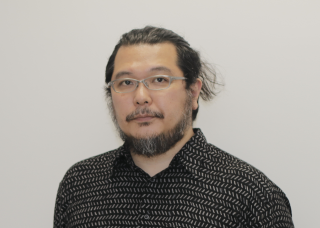
- Makoto Ando
- Art Director

- Yoko Tanaka
- Lead Artist
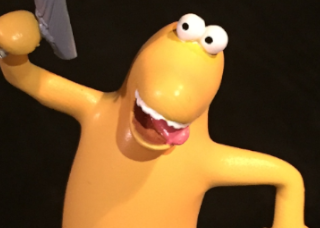
- Yoshiaki Sawada
- Game Design Director
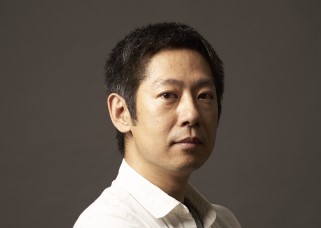
- Yoshihito Yano
- Sound Director
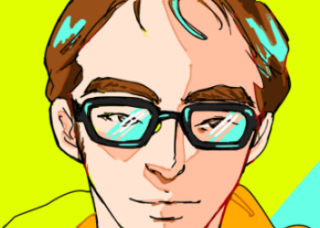
- Koichiro Watanabe
- Chief Technical Director
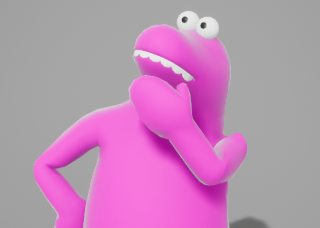
- Tomokazu Matsumaru
- Technical Director
――First things first, would you please introduce yourselves?
●Shigeta: I was responsible for the entirety of planning and direction in Survival Quiz CITY.
●Sawada: I was in charge of things related to the quizzes, localization, and creating the Steam page.
●Watanabe: I was Survival Quiz CITY’s Chief Technical Director. My team developed the game with three engineers, one server engineer, and help.
●Matsumaru: I worked as an engineer alongside Watanabe.
●Ando: I worked as an Art Director. I was in charge of the entirety of the game’s art. Four to five other members of my team developed the game while working on other projects.
●Tanaka: I created art for every aspect of the title, including character designs and pieces demonstrating the game’s universe.
●Yano: I worked as a Sound Director. I oversaw sound direction, songwriting and sound effects, implementation requests, and the creation of the soundtrack. One of the project’s concepts was to work with up-and-coming staff to create something cool, so the entire crew of freshman and sophomore creators in the studio joined this project. We provided each other with a lot of inspiration as we worked on together to develop it.
Planners and engineers worked together closely to create specifications
――I’d like to start by asking about the game’s tech. The game features thirty-player multiplayer and supports cloud gaming, so I imagine that making something like that would be quite a challenge from a technical perspective.
●Watanabe: Our original plan when we first started planning the game was to support one hundred player matches. When I first heard it I was skeptical, and we started with technical tests for a one hundred player game.
●Matsumaru: I felt that setting the bar at one hundred players was too high, so before we started adding details to the game I connected simple AI to it and ran a stress test. The results told us that sixty to seventy players was the limit. We reasoned that we’d be adding lots of actions that would only increase the amount of data to relay, meaning that even after optimizing, this was our player cap.
――Battle royale shooters feature battles with around one hundred players, but what differentiates this game from that genre?
●Matsumaru: While both games feature battles between large groups, players in battle royale shooters are more dispersed, whereas those in our title throng into single locations. It was a challenge to make a game that works even when players are densely concentrated.
Furthermore, we used non-synchronized networking which doesn’t respond well to actions that let characters get in each other’s way. Early builds of the game gave GYAAR-kun the ability to grab on to other characters and hinder their movement, but we later removed that feature. This type of thing isn’t normally seen in battle royale shooters. The reason for this is that there would be discrepancies between what each player sees, for example if a player in the U.S. tried to grab a player in Japan.
●Sawada: Hindering movement was just the first of the many things that engineers nipped in the bud, telling us that they are absolutely unacceptable when making an online game. (Laughs.)
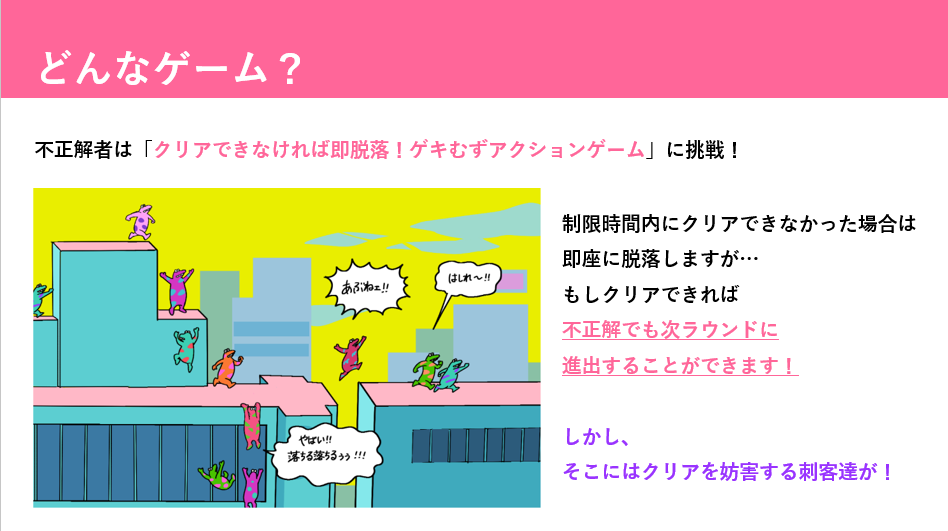 Excerpt from the Original Proposal
Excerpt from the Original Proposal
――So battles with one hundred players and or actions that hinder others movement is technically unfeasible. Were engineers alone able to solve issues like this?
●Matsumaru: In some cases we talked with planners and asked them to adjust the specifications to be more realistic, and in others we made demos of actions and check their results.
●Watanabe: Making network-induced lag less apparent to the user is another challenge, and we asked them to plan for this by changing the specifications.
――You mentioned that your tests told you that the maximum match size was sixty to seventy, but the commercial version uses even smaller matches of thirty players. Why is that?
●Shigeta: That was less because of technical limitations and more because of our team size; we didn’t think that our small team of just ten developers could make a game that’s packed with sixty to seventy players. And we figured that we would be able to round up thirty people for a test play just by asking around internally.
●Watanabe: That decision lowered the bar for us in terms of tech, and honestly everyone in my position was relieved.
Weaving the winning team and losing team experience into a single game
――I think this game’s design is also very unique. It contains the losing team’s experience, who try to reach the goal while collecting coins by traversing an action-packed obstacle course, and the winning team’s, whose playstyle is closer to a shooting game in which they bombard the former team. In addition to the asymmetrical competition created by the two experiences, it also contains quiz gameplay.
●Shigeta: In a normal game, players compete with each other on equal footing, meaning we have to strike a balance between risk and reward. In Survival Quiz CITY, the competition occurs between the winning team, who are posed with no risk, and the losing team, who are posed with nothing but it. This structure made it tough to figure out ways to make the experience fun for both sides while balancing gameplay and designing levels.
――Did you arrive at the current concept through trial-and-error?
●Shigeta: The concept did not change since its inception. We first created a prototype of a game where players are divided into winning and losing teams based on their quiz results, but the internal response was lukewarm. We were told that attacking as the winning team just felt like work, and that the losing team’s part was badly paced.
――What was different than the retail version?
●Shigeta: One big difference was that there was no system to collect coins and buy power-up items. In the retail version, coins are earned by attacking the losing team, but in the prototype, there were no coins. That meant that the winning team had no incentive to attack the losers.
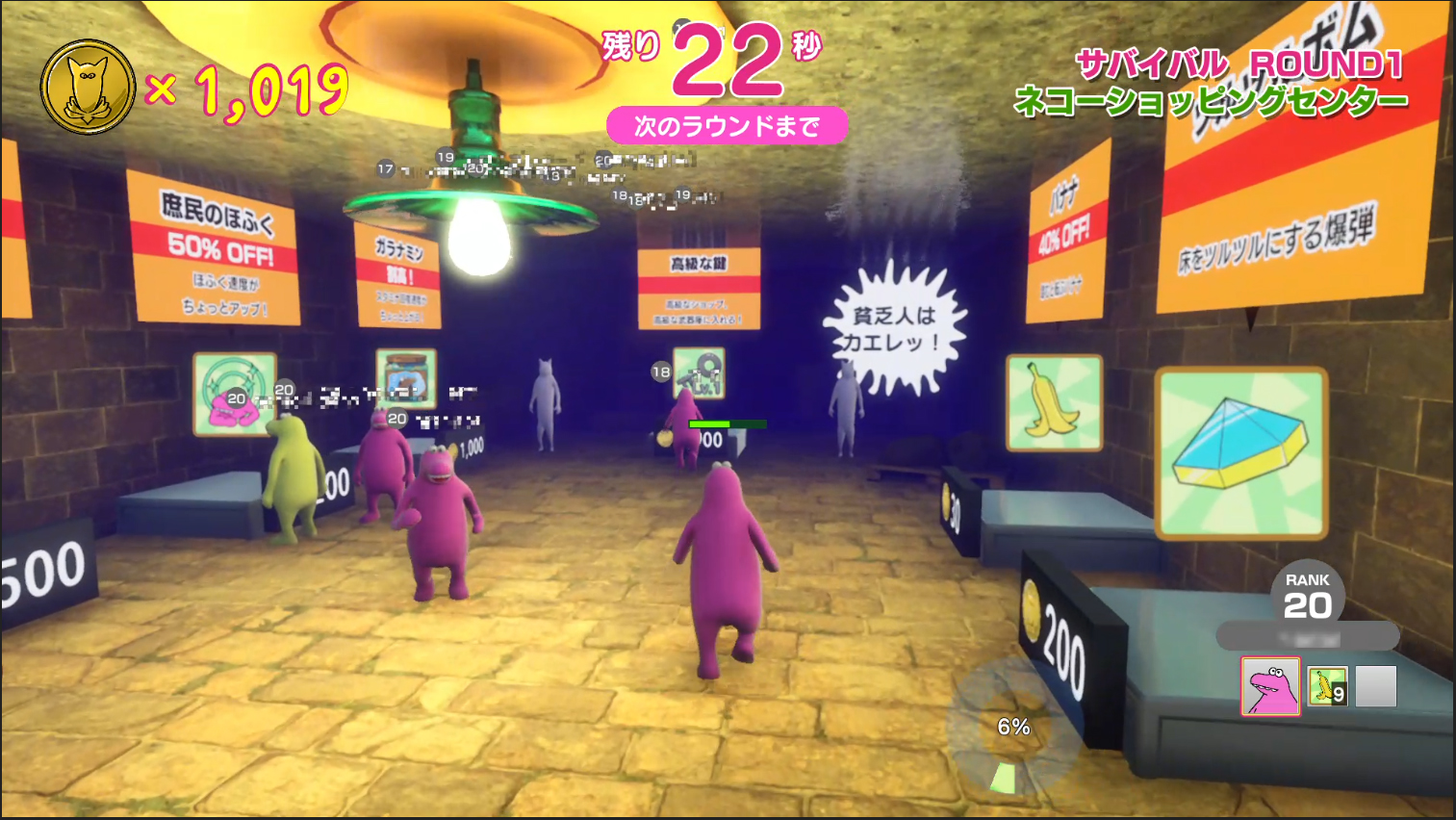
――The point of the game was that the winning team attacks the losing team, but there was no system that motivates them to do so.
●Shigeta: On the other hand, the losing team needed to hold down a button then release it to jump. We intended to turn the action into a gamble, where the winning team could aim for players while they’re vulnerable. But during internal tests, we were told by multiple players that it didn’t feel well paced so we changed it to a normal jump.
There was also different behavior when a member of the losing team grabbed another teammate; they would grab their teammate’s shoulders and use them as a shield. We got rid of the feature then brought it back more than once during development, but ultimately had to let go of it because of issues with debugging costs.
The player controlling their camera was also not part of the game. We made it this way out of consideration for players who aren’t used to gaming, but during internal tests were told by many participants that they want to have camera control when playing on the winning team. This told us that they needed to be able to control the camera and aim at other players for the shooting part of the game to be fun.
During development, we repeatedly went through this process of analyzing the project’s shortcomings and ideas in need of fixing, then restarting testing.
Believing in what you felt is best while creating visuals
――Let me ask some questions about the game’s visuals. One thing that stood out to me was that you intentionally employed a feel that harks back to the 1980s to 90s, but what made you choose this period of time?
●Tanaka: The ‘80s have seen a boom in popularity among young people over the past years. The era has gained steadfast prevalence for being cute, original, and different than what’s around nowadays. Anyone subscribed to a video service is also able to enjoy anime from the ‘80s and ‘90s, whose visual styles is well received by audiences both inside and outside of Japan. Finally, I think things are the way they are because most of the people now featuring ‘90s culture were not around when they were first released.
●Ando: One source of motivation for our team is the desire to make content that can only be made in Japan, and that desire lead us to cram the game full of uniquely Japanese elements. Survival Quiz CITY targets a demographic of young people in the Reiwa-era (2020s) that have high game literacy, but there’s a part of me that wants to show them Shōwa-era (1920s-80s) grit. The rest of the team jumped on all of the Shōwa-era elements that I suggested and added their own ideas, which resulted in ideas that had ten times more punch than my original ones. There were even other artists who were born in the Heisei era (1990s-2010s) but who are well-versed in the Shōwa era.
●Yano: Every so often, Ando-san sent me videos from the ‘80s which I used as a reference when I was writing the project’s music. (Laughs)
――What was the concept behind GYAAR-kun’s design? The design looks well-balanced; it’s cute but not too much so.
●Tanaka: Ando-san told me that the game consists of powered-up players knocking out weak ones, but that doing so with human characters would be gruesome, meaning we need to come up with some sort of alternative. Hearing this, I drew up multiple types of characters for the game.
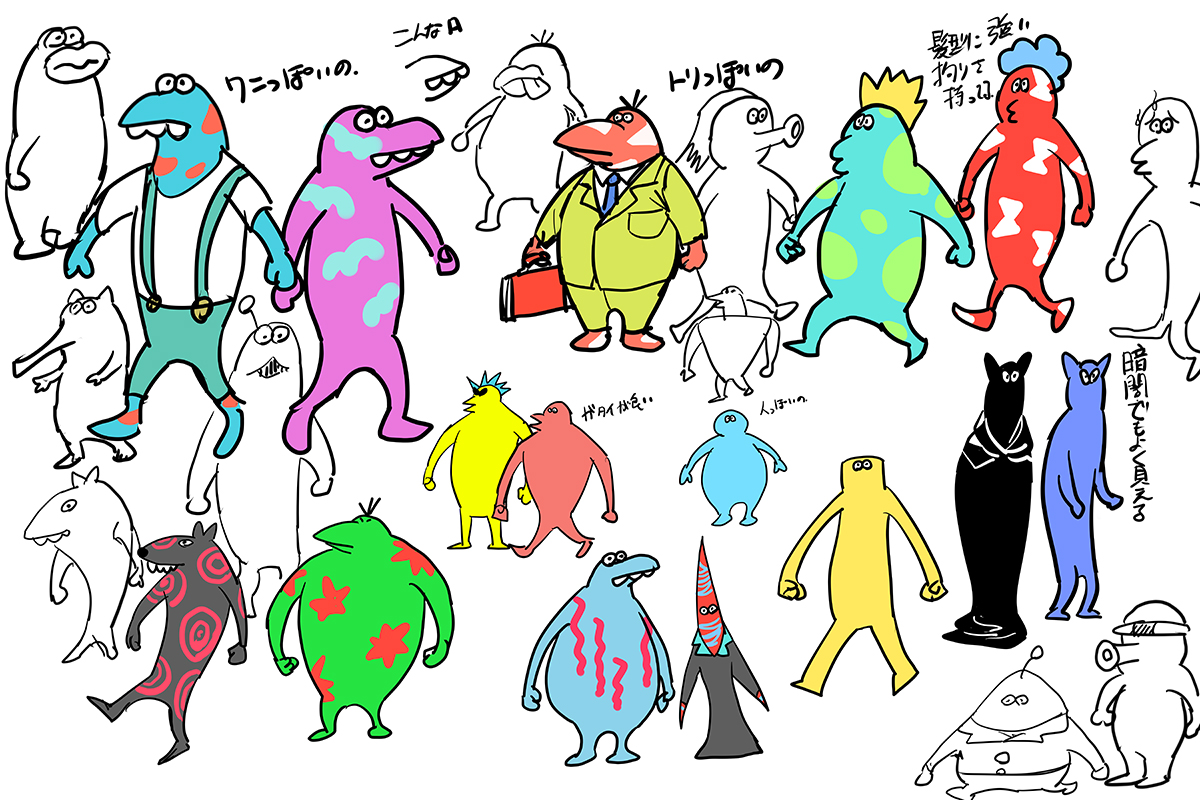
●Ando: I asked Tanaka-san to create designs that express both joy and sorrow, which are stylistically colorful and pop-art, and also cute and chaotic. GYAAR-kun was in the first batch she created. I trust that she intuitively understands what to do with the character, so as the next step I asked her to flesh out her original sketch.
――It’s fascinating that one of the characters from her first sketches was used as is. That means a character doesn’t necessarily get better by doing more work on it.
●Ando: The idea that we do our best work on our first attempt is something of a legend in our company. We may make a lot of changes to designs during development, but a lot of the time we end up going back to our first idea.
●Tanaka: I ended up going with the first design I came up with, and didn’t make many changes to it. My original concept was to make a character that you’d want to wear on a T-shirt, that works well as a sticker, and that looks like the characters on clothing sold in Harajuku.
●Ando: We try to reduce costs when creating 3D models and variations by using the patterns on characters’ bodies to show that they are powered up. We originally tried to create multiple species with different appearances; GYAAR-kun was a member of the GYAAR family. But he eventually became GYAAR-kun since that’s what Watanabe-san called him. You could say that everyone involved with production helped to create the character.
●Tanaka: I loved that everyone referred to him as “GYAAR-kun.” (Laughs)
●Ando: The Super Candy Machine, which you can find in the CITY and gives you coins, is actually a remnant from the time when we had multiple species in-game. The machine is based on Super Candy-chan, who you can see in the Character Introduction section; it’s just one of the examples of the species we previously came up with.
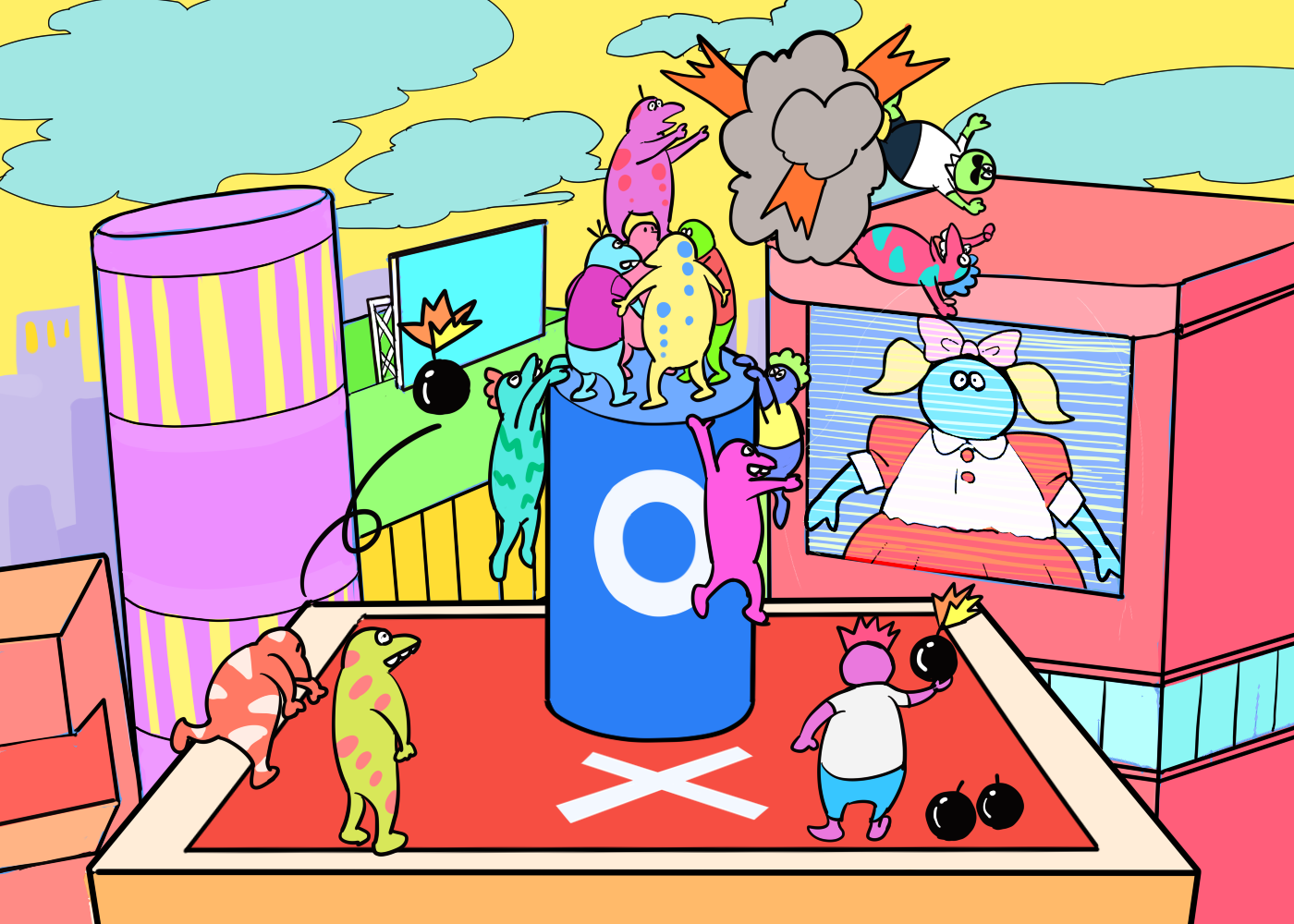
――You tried a lot of new things in this game’s artwork: ‘80s-‘90s-inspired visuals and the cute-but-not-too-cute GYAAR-kun. How was it received internally?
●Ando: We definitely received comments suggesting to replace GYAAR-kun with a human character, or to give Lammy-chan a more modern design. You could say that we took a different approach than the rest of the Bandai-Namco Group, which tends to release its original characters across multiple media, but we didn’t let this stop us when we worked on the characters.
●Tanaka: I personally like Lammy-chan’s style, but you can’t know how characters will be received until you launch them as part of a game. A lot of our staff were around in the ‘80s and ‘90s, so when showed her internally and listened to peoples’ reactions, more were hesitant about her look than confident that its inspiration had come full circle and now feels fresh. So I was happy to hear that she was well-received by users despite this. I was able to experience creating a design that I felt confident in and having it be well received, and this experience is something I personally treasure.
●Ando: I wasn’t worried at any point. We ended up going with the second design that Tanaka-san created for Lammy-chan and made almost no changes to it. I think it’s important to maintain this kind of skill while also avoiding going stale.
(Writter:Shiniti Yamoto)
NEXT>>> The Making of Survival Quiz CITY (Part Two)
Official Site
https://store.steampowered.com/app/1466930/Survival_Quiz_CITY/
*All company and product names mentioned herein are trademarks or registered trademarks of their respective companies.
(*1)©2022 Valve Corporation. Steam and the Steam logo is a trademark or registered trademark of Valve Corporation in the United States and/or other countries.
Survival Quiz CITY
©Bandai Namco Studios Inc. Published by Phoenixx Inc.




